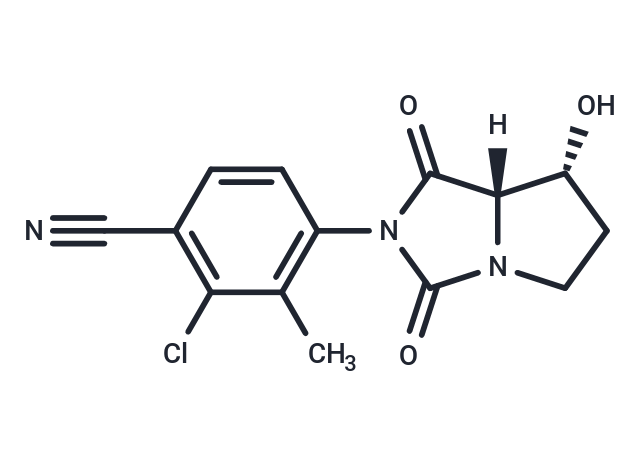Shopping Cart
- Remove All
 Your shopping cart is currently empty
Your shopping cart is currently empty

BMS-564929 is a highly effective androgen receptor (AR) agonist that upregulates the expression and activity of lipogenic enzymes, reduces VAT content and lipid content, and downregulates the expression of acetyl-CoA carboxylase, FASN, and SCD.

| Pack Size | Price | Availability | Quantity |
|---|---|---|---|
| 50 mg | $1,980 | 6-8 weeks | |
| 100 mg | $2,800 | 6-8 weeks |
| Description | BMS-564929 is a highly effective androgen receptor (AR) agonist that upregulates the expression and activity of lipogenic enzymes, reduces VAT content and lipid content, and downregulates the expression of acetyl-CoA carboxylase, FASN, and SCD. |
| Targets&IC50 | AR:2.11 nM (Ki) |
| In vitro | BMS-564929 is a novel, highly effective and orally active non-steroidal tissue-selective androgen receptor (AR) modulator with Ki = 2.11 nM. The EC50 value of BMS-564929 in mouse myoblasts (C2C12) and rat PEC cell lines was 0.44 nM and 8.66 nM, respectively. [1] |
| In vivo | BMS-564929 (0.00001 - 10 mg/kg,14 days, gavage) is more effective than testosterone in stimulating the growth of the levator anal muscle and has a strong oral activity. [1] |
| Alias | BMS564929 |
| Molecular Weight | 305.72 |
| Formula | C14H12ClN3O3 |
| Cas No. | 627530-84-1 |
| Smiles | O=C1N(C(=O)N2[C@]1([C@H](O)CC2)[H])C3=C(C)C(Cl)=C(C#N)C=C3 |
| Relative Density. | 1.58 g/cm3 (Predicted) |
| Storage | store at low temperature | Powder: -20°C for 3 years | In solvent: -80°C for 1 year | Shipping with blue ice. | |||||||||||||||||||||||||||||||||||
| Solubility Information | H2O: < 1 mg/mL (insoluble or slightly soluble) DMSO: 40 mg/mL (130.84 mM), Sonication is recommended. | |||||||||||||||||||||||||||||||||||
Solution Preparation Table | ||||||||||||||||||||||||||||||||||||
DMSO
| ||||||||||||||||||||||||||||||||||||

Copyright © 2015-2024 TargetMol Chemicals Inc. All Rights Reserved.